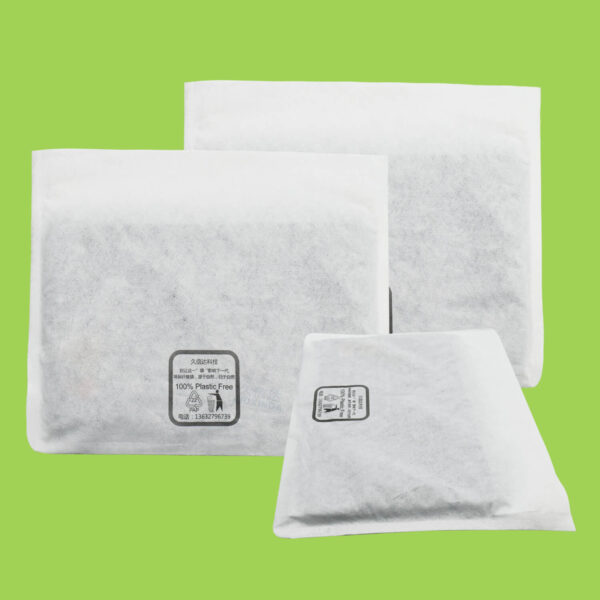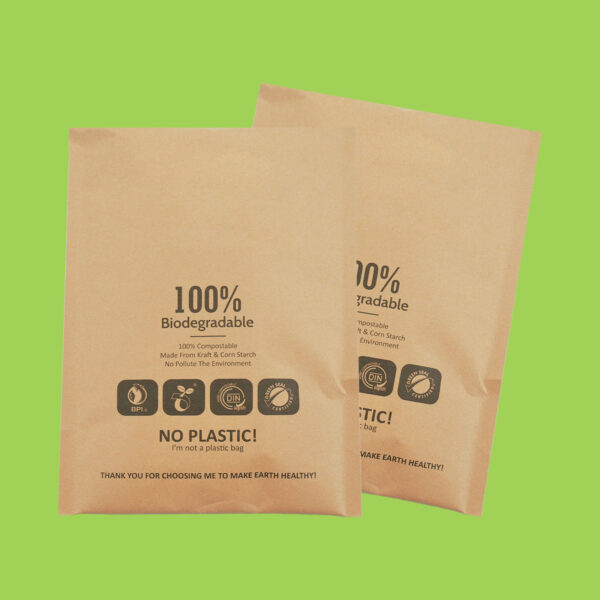In today’s society, with the increasing awareness of environmental protection, people are more and more concerned about sustainable development and environmental protection. Among many environmental protection measures, the emergence of renewable packaging bags provides an effective solution to reduce plastic pollution and protect the ecological environment. In this paper, we will introduce in detail the definition, characteristics, types and advantages of renewable packaging bags, as well as their importance and application prospects in modern society.
Contents
- 1 I. Definition of renewable bags
- 2 Second, the characteristics of renewable bags
- 3 III. Types of renewable packaging bags
- 4 (i) Plant fiber bags
- 5 Fourth, the advantages of renewable bags
- 6 V. The importance of renewable bags in modern society
- 7 VI. Application prospects of renewable packaging bags
- 8 VII. Challenges for renewable bags
- 9 VIII. Conclusion
I. Definition of renewable bags
Renewable bags are packaging materials made from renewable resources, designed to replace traditional non-biodegradable plastic bags. Renewable resources are resources that can be naturally regenerated in a short period of time or regenerated through artificial cultivation, such as plant fibers and biodegradable plastics. The design concept of renewable packaging bags is to reduce the negative impact on the environment, while meeting the basic functions of packaging, such as protecting the goods and facilitating portability and transportation.
Second, the characteristics of renewable bags
(i) Environmental friendliness
The most important feature of renewable bags is their environmental friendliness. Compared with traditional plastic bags, most of the raw materials used in the production process of renewable bags come from renewable resources, such as corn starch, bagasse, bamboo fibers and so on. These raw materials can be decomposed by microorganisms in the natural environment, and will not accumulate in the environment for a long time like traditional plastics, causing white pollution. For example, bags made of biodegradable plastics can be decomposed by microorganisms into carbon dioxide and water after a certain period of time in the soil or marine environment, which is harmless to the environment.
(ii) Renewability
The raw materials for renewable bags are renewable. This means that these raw materials can be continuously regenerated through natural growth or artificial cultivation. For example, bamboo is an extremely fast-growing plant whose fibers can be used to make bags. When bamboo is cut down for bag production, new bamboo can be regrown within a short period of time, ensuring a sustainable supply of raw materials. This renewability makes renewable bags more efficient and sustainable in terms of resource utilization, reducing dependence on finite resources.
(iii) Functional diversity
Although the main purpose of renewable bags is to be environmentally friendly, they are no less functional than traditional bags. Renewable bags can be designed and manufactured according to different needs and have a variety of functions. For example, some renewable bags can be waterproof, moisture-proof, can effectively protect goods from the impact of humid environments; there are also some renewable bags with good air permeability, suitable for packaging fresh food, to extend the freshness of food. In addition, renewable packaging bags can also be personalized through printing and other ways to meet the needs of different businesses and consumers.
III. Types of renewable packaging bags
(i) Plant fiber bags
Plant fiber bags are a common type of renewable bags. It is mainly made of plant fibers, such as bamboo fibers, hemp fibers, cotton fibers and so on. These plant fibers have good strength and toughness and can meet the basic requirements of packaging. For example, bamboo fiber bags have natural antibacterial properties, suitable for packaging food and cosmetics and other goods with high hygiene requirements. Hemp fiber bags, on the other hand, have good air permeability and moisture absorption, suitable for packaging fresh food, to help regulate the humidity inside the package, to extend the freshness of food.

(ii) Biodegradable plastic bags
Biodegradable plastic bags are another common type of renewable bags. Biodegradable plastic is a special type of plastic material that can be broken down by microorganisms in the natural environment. The raw materials for these bags are usually made from renewable resources, such as corn starch and bagasse. Biodegradable plastic packaging bags can be discarded in the natural environment after use and will be decomposed by microorganisms after a certain period of time without causing pollution to the environment. For example, some biodegradable plastic packaging bags used for food packaging can be completely decomposed in the soil after a few months, turning into carbon dioxide and water and returning to nature.

(iii) Paper bags
Paper bags are also a kind of renewable bags. The raw material of paper bags is mainly wood fiber, which is made through the papermaking process. Paper bags have good recyclability and degradability. It can be recycled into paper or other paper products, reducing the waste of resources. At the same time, paper packaging bags can also be decomposed in the natural environment, which has less impact on the environment. For example, some paper bags used for gift wrapping can be recycled and reused to make new paper, realizing the recycling of resources.

Fourth, the advantages of renewable bags
(i) Reduction of environmental pollution
The biggest advantage of renewable packaging bags is that they can reduce environmental pollution. Due to their non-degradability, traditional plastic bags tend to become garbage after use and accumulate in the environment for a long time, causing white pollution. Renewable bags, on the other hand, can be naturally decomposed or recycled after use and will not cause long-term negative impact on the environment. For example, after biodegradable plastic bags are decomposed by microorganisms in the soil, they will not form microplastic particles that pollute the soil and water sources as traditional plastics do.
(ii) Promotion of resource recycling
The use of renewable bags promotes the recycling of resources. Many of the raw materials for renewable bags can be recycled into new bags or other products. For example, paper bags can be recycled into new paper or paper products. This type of resource recycling not only reduces the need for raw materials, but also reduces production costs and realizes the sustainable use of resources.
(iii) Consistency with the concept of sustainable
The use of renewable bags is consistent with the concept of sustainable development. Sustainable development means meeting the needs of the present generation without jeopardizing the ability of future generations to meet their own needs. Most of the raw materials for renewable bags come from renewable resources, and their production process and use have less impact on the environment, in line with the requirements of sustainable development. The use of renewable bags can reduce dependence on non-renewable resources and protect natural resources, while also helping to reduce greenhouse gas emissions and combat climate change.pment
V. The importance of renewable bags in modern society
(i) Addressing plastic pollution
Plastic pollution is one of the serious environmental problems facing the world today. The widespread use of traditional plastic bags has led to the generation of a large amount of plastic waste, which accumulates in the environment over a long period of time and causes serious damage to the ecosystem. The emergence of renewable bags provides an effective way to solve the problem of plastic pollution. Through the use of renewable bags, the use of traditional plastic bags can be reduced, thereby reducing the generation of plastic waste and alleviating the pressure on the environment.
(ii) Promotion of environmental protection industry
The production and development of renewable packaging bags can promote the growth of environmental protection industry. With the improvement of people’s awareness of environmental protection, the demand for renewable packaging bags is also increasing. This has prompted more enterprises and research institutions to invest in the research and development and production of renewable bags, promoting the progress of related technologies and industrial development. For example, the continuous development of biodegradable plastic technology, so that the performance of biodegradable plastic bags continue to improve, the cost is gradually reduced, for the wide application of renewable bags to provide technical support.
For enterprises, the use of renewable bags can enhance their sense of social responsibility. In today’s society, consumers are more and more concerned about the environmental protection behavior of enterprises, enterprises using renewable bags can show consumers that it attaches importance to environmental protection, enhance consumer trust and goodwill. At the same time, the use of renewable bags can also reduce the cost of packaging materials and improve the economic efficiency of enterprises. For example, some large retailers have begun to use renewable bags to package their products, which not only helps to reduce plastic pollution, but also enhances the brand image of the company and strengthens its competitiveness in the market.
VI. Application prospects of renewable packaging bags
(i) Applications in the food industry
Renewable packaging bags have a broad application prospect in the food industry. Food packaging needs to meet the requirements of protecting food, extending freshness and making it easy to carry. Renewable pouches can be designed and material selection to meet these requirements while achieving environmental goals. For example, some of the renewable bags used for packaging fresh food have good air permeability and moisture absorption, can regulate the humidity inside the package, to extend the freshness of food. In addition, renewable bags can be personalized through printing and other means to meet the needs of different food brands.
(ii) Applications in the retail sector
The retail industry is one of the industries that use a large amount of bags. The application of renewable bags in the retail industry can effectively reduce the use of plastic bags and reduce plastic pollution. For example, some supermarkets have started to use paper bags or biodegradable plastic bags to replace traditional plastic bags, providing consumers with environmentally friendly shopping options. At the same time, the use of renewable bags can also enhance the brand image of retailers and increase consumer loyalty.
(iii) Applications in the logistics industry
The logistics industry requires a large amount of packaging materials in the process of commodity transportation and distribution. The application of renewable bags in the logistics industry can reduce the generation of packaging waste and lower the impact on the environment. For example, some renewable bags have good strength and toughness, can meet the requirements of logistics and transportation, and at the same time after use can be recycled or natural decomposition. In addition, the use of renewable bags can also reduce the packaging costs of logistics enterprises, improve the economic efficiency of enterprises.
VII. Challenges for renewable bags
(i) Cost issues
Despite the many advantages of renewable bags, their relatively high cost is still a problem that needs to be solved. At present, the production technology and raw material costs of renewable bags are relatively high, resulting in higher market prices than traditional plastic bags. This has limited the wide application of renewable bags to a certain extent. However, with the progress of technology and the realization of large-scale production, the cost of renewable bags is expected to gradually reduce.
(ii) Performance issues
Some renewable bags may not perform as well as traditional plastic bags. For example, some biodegradable plastic packaging bags may be relatively weak in strength and toughness, and may be prone to breakage or deformation during use. In addition, the waterproof and moisture-proof performance of some renewable bags may not be as good as that of traditional plastic bags. This requires technological research and development and material improvement to improve the performance of renewable bags so that they can better meet market demand.
(iii) Consumer perception issues
The low level of consumer awareness of renewable bags is also a problem that needs to be addressed. Many consumers do not have a good understanding of the environmental advantages of renewable bags and how to use them, which leads to their preference for traditional plastic bags when choosing bags. Therefore, it is necessary to strengthen the publicity and promotion of renewable bags, improve consumer environmental awareness and cognitive level, and promote the widespread use of renewable bags.
VIII. Conclusion
As an environmentally friendly packaging material, renewable bags have important significance and broad application prospects. It can not only reduce environmental pollution and promote resource recycling, but also promote the development of environmental protection industry and enhance the social responsibility of enterprises. Although renewable bags face some challenges in terms of cost, performance and consumer awareness, these issues are expected to be resolved with the advancement of technology and market promotion. In the future, renewable bags are expected to become the mainstream packaging material, making a greater contribution to protecting the environment and realizing sustainable development. Each of us should actively participate in the promotion and use of renewable bags, and jointly contribute to the building of a better planet.

